 ‘Bhed Chaal’ is a Hindi proverb very much used in relation to the Hindi film industry. It means that one huge success is followed by numerous other attempts. Original ideas are at a premium in the Hindi film industry.
‘Bhed Chaal’ is a Hindi proverb very much used in relation to the Hindi film industry. It means that one huge success is followed by numerous other attempts. Original ideas are at a premium in the Hindi film industry.
The makers either depend on a foreign film, or a novel, or a South Indian film for a subject.
Filmmakers always want to play safe because the risk factor is always high. The distributor, while being wined and dined, gets a sales pitch, like “Zanjeer se kam nahi hamari picture…” and such. Many smaller-budget imitations of ‘Sholay’, ‘Zanjeer’, ‘Deewaar’ and other such films flooded the market. That is to say, if one action film worked, many more were certain to follow.
With the introduction of the video format followed by CDs, the trend changed to copying Hollywood films. A star was sent two videos or discs to watch, and they were told that the first and second half of the film would be made!
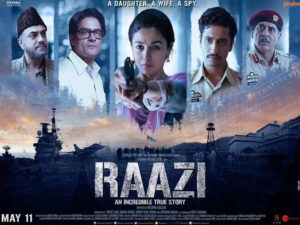
Hollywood films don’t have songs and dance routines, so slots were created for Hindi ‘adaptations’. Not in sync with the story lifted from videos or discs, the songs had to be forced in and usually happened to be out of place.
A film producer tried to create all sorts of buffers to cover himself. How were Dharmendra and Hema Malini paired in more than 30 films, one after the other? Similar was the case with Rajesh Khanna-Sharmila Tagore/Mumtaz pair or Jeetendra-Jaya Prada/Sridevi or Amitabh Bachchan-Rekha films.
They were called hit pairs expected to guarantee a hit, and therefore were not to be disturbed.
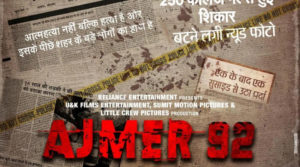 What happened was that every second producer wanted either the Laxmikant Pyarelal duo or R.D. Burman to score the music for his film and other equally talented composers were mostly sidelined!
What happened was that every second producer wanted either the Laxmikant Pyarelal duo or R.D. Burman to score the music for his film and other equally talented composers were mostly sidelined!
Did the lyric writer come as a package deal with these two ruling composers of the time? The combination worked well and was easy to sell. Only a rare discerning filmmaker would opt for a lyric writer such as Majrooh Sultanpuri, or anyone else to suit the subject of his film.
Raj Kapoor launched his son Rishi Kapoor with ‘Bobby’, a love story. It was a blockbuster and every star wanting to launch his ward thought it to be a great idea.
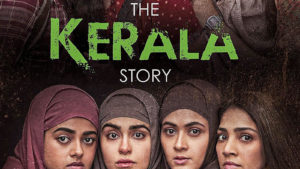 Rajendra Kumar launched his son Kumar Gaurav with ‘Love Story’, Manoj Kumar made ‘Kalaakaar’ for his son, Kunal Goswami, Dharmendra launched Sunny Deol with ‘Betaab’, and the other son, Bobby Deol, with ‘Barsaat’. For Anil Kapoor, after a few films here and there, it was the home production, ‘Woh Saat Din’, that worked.
Rajendra Kumar launched his son Kumar Gaurav with ‘Love Story’, Manoj Kumar made ‘Kalaakaar’ for his son, Kunal Goswami, Dharmendra launched Sunny Deol with ‘Betaab’, and the other son, Bobby Deol, with ‘Barsaat’. For Anil Kapoor, after a few films here and there, it was the home production, ‘Woh Saat Din’, that worked.
It became the preferred and safe formula for all filmmakers to launch a new face. Aamir Khan made his debut with his uncle Nasir Husain’s film, ‘Qayamat Se Qayamat Tak’, Jackie Shroff made his mark with ‘Hero’.
Director Sooraj Barjatya, a Rajshri Pictures scion, was launched with ‘Maine Pyar Kiya’, which inaugurated the careers take-off of both Sooraj and Salman Khan, whose second film it was. Aditya Chopra and Karan Johar followed suit and were successful in establishing not only their own careers, but also consolidating their banners.
 Not very long ago, a film on the sports icon M.S. Dhoni proved to be a hit. And, before you could utter the word ‘cricket’, every second filmmaker was planning a sports-based film?!
Not very long ago, a film on the sports icon M.S. Dhoni proved to be a hit. And, before you could utter the word ‘cricket’, every second filmmaker was planning a sports-based film?!
We also had a rather costly biopic on Sachin Tendulkar, ‘Sachin: A Billion Dreams’. He was as much an icon or maybe bigger. But the film turned out to be more of a documentary, where the icon was talking about his struggles on the way up. There was no script, let alone a bit of fictionalisation the way it was done with ‘M.S. Dhoni: The Untold Story’.
Sports films never worked in India because we were always the losers. We basked in the glory of Milkha Singh and P.T. Usha, both losing by a whisker. The fact is, we had no winners.
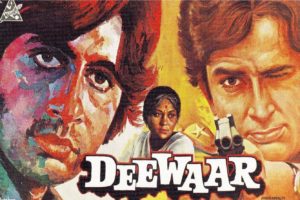 When we got into winning ways, people wanted to make sports-based films, but had no clue how to. That is except Aamir Khan, who pushed himself into the background and gave importance to the content and glory of the wrestling champions on whom the film was based. His film, ‘Dangal’, was a milestone.
When we got into winning ways, people wanted to make sports-based films, but had no clue how to. That is except Aamir Khan, who pushed himself into the background and gave importance to the content and glory of the wrestling champions on whom the film was based. His film, ‘Dangal’, was a milestone.
Briefly, films centred on nationalism and social messages. So, we had films such as ‘Parmanu: The Story Of Pokhran’, ‘Uri: The Surgical Strike’, ‘Raazi’, ‘Ghazi’, ‘Attack’, ‘Kesari’, ‘Airlift’, ‘Mission Mangal’, ‘Toilet: EK Prem Katha’, ‘Padman’, ‘Holiday: A Soldier Is Never Off Duty’, ‘Batla House’, ‘The Tashkent Files’, and so on.
‘The Tashkent Files’ (box office: Rs 23 crore) by Vivek Agnihotri was a thought-provoking film, and though it did not make much of an impact on the cinema-going audience, it became a talked-about movie on the digital circuit, more so after the same maker’s ‘The Kashmir Files’ was released.
The film not only hogged much of news and television media, besides social networks, but it also set the box office jingling with a business of Rs 245 crore till date.
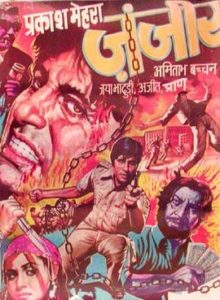 The box-office success of ‘The Kashmir Files’ was followed by another such issue-based film: ‘The Kerala Story’. This film, again, has turned out to be a money-spinner, collecting Rs 235 crore so far! Nobody expected such films to stir up the media and public emotions, and also to rock the box office. I don’t think even the makers of both these films did.
The box-office success of ‘The Kashmir Files’ was followed by another such issue-based film: ‘The Kerala Story’. This film, again, has turned out to be a money-spinner, collecting Rs 235 crore so far! Nobody expected such films to stir up the media and public emotions, and also to rock the box office. I don’t think even the makers of both these films did.
They were probably made out of conviction and highlighted the social evils and injustice done to people.
In an industry where few makers know what works and what does not, film makers try to follow the last successful production and its formula, or what the industry describes as ‘Bhed Chaal’. There is a crowd of filmmakers shortlisting such ‘thought-provoking’ themes based on news reports of real-life events.
A run for such films has started.
The films in the offing are ‘Ajmer 92′, ’72 Hoorain’, ‘Ajmer Files’, ‘The Vaccine War’, ‘Emergency’, ‘Operation AMG’, ‘Operation Balakot’, ‘India House’, and ‘Delhi Files’. These films are reopening a lot of files gathering dust.
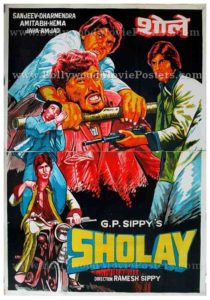 The intention of the makers of these films seems to be the realisation that such films may mean money more than spreading awareness about the wrongdoings plaguing the system.
The intention of the makers of these films seems to be the realisation that such films may mean money more than spreading awareness about the wrongdoings plaguing the system.
None of these makers took a stand when the wrongs were happening!
The films on these subjects are bound to create controversies and certain sections, opposed to them, have already branded them as ‘propaganda films’!
Take the instance of ‘Ajmer 92’. No sooner did the film’s promos appear on YouTube, a Delhi-based Islamic organisation, Jamiat Ulama-i-Hind, called for a ban on the film.
Other organisations and some political parties will join the bandwagon. And, as the makers would have hoped for, the film and the related controversy are all over television channels, dominating prime time slots.
This will certainly give confidence to the other makers who are busy digging out old ‘files’! (IANs)



